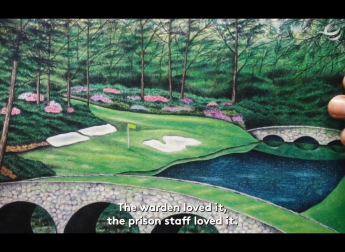After Sandy Lyle bid goodbye to professional golf at the Masters Tournament, we hear memories from two of the men who have shared locker rooms and fairways with him over the past 50 years.
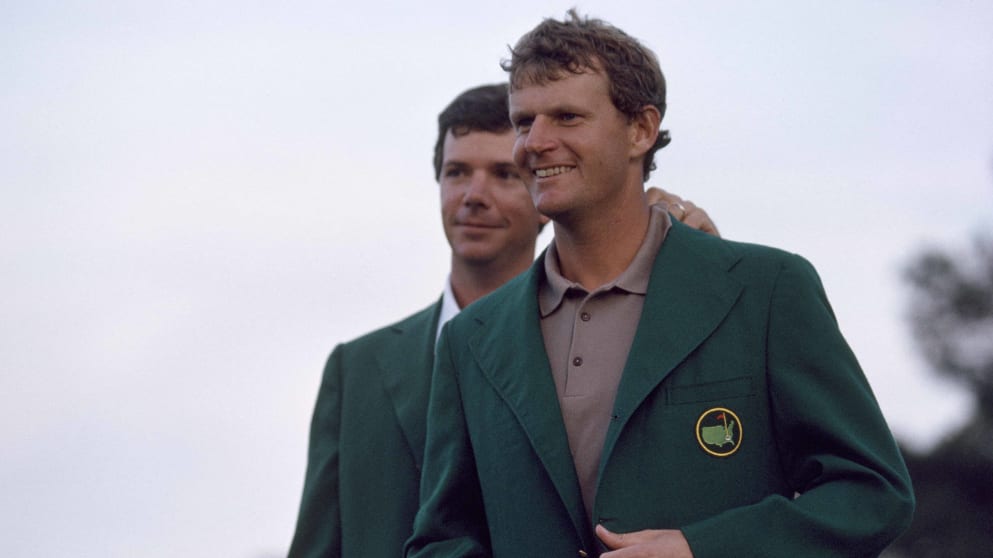
"He's an absolute giant when it comes to the Tour. He really was one of the leading lights that revolutionised the Tour."
Those are the very first words spoken by Ken Brown when asked to talk about Ryder Cup team-mate Sandy Lyle, who last week brought the curtain down on his Hall of Fame career at the Masters Tournament.
After bursting onto the scene in 1979, Lyle was one of the great European trailblazers who turned the golfing hierarchy on its head, winning two Major Championships and a PLAYERS Championship and playing on two winning Ryder Cup teams.
His victory at the 1988 Masters Tournament made him the first player from the British Isles, the third from Europe and just the fourth non-American to wear the Green Jacket, while those Ryder Cup victories in 1985 and 1987 were the first defeats for the United States in 30 years and a first win ever for either Great Britain and Ireland or Europe on US soil.
Brown would play alongside Lyle in both of those team triumphs but his relationship with his fellow Scot went back much further.
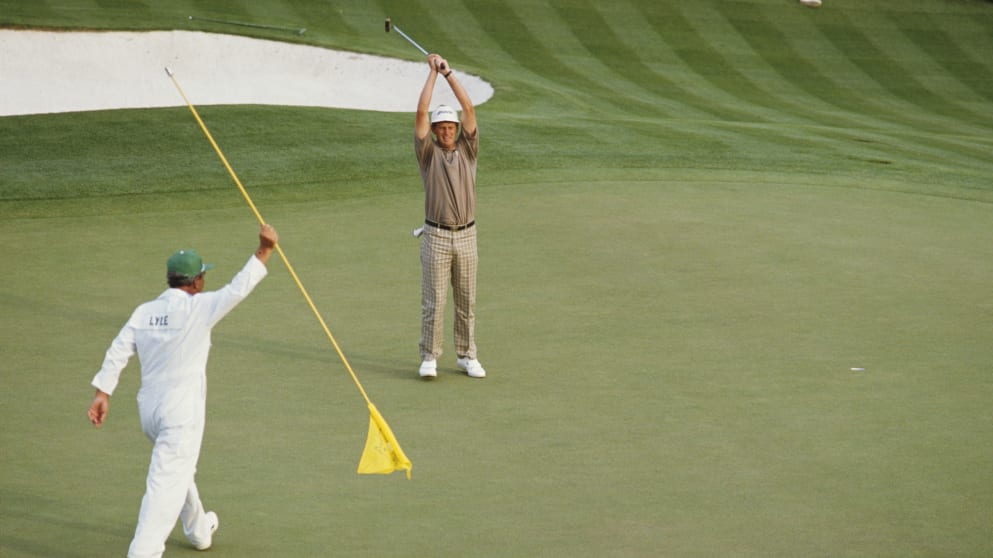
"I first bumped into Sandy when we both played in the Boys Internationals at Hoylake in 1974 and at that time Sandy and a chap called David Robertson were head and shoulders above anybody else," he said.
"I remember the incredible power he had. We were all reeds in the wind and he had this incredible slow backswing and he just crunched it.
"You could see what a mega talent he was, he was so far above the rest of us skinny wisps of lads and you could see he had a lot of skill and talent.
"His dad Alex was a pro so he got a bit of a flying start but as soon as he turned pro he was straight to the top of the game, you could see he was going to be one of the talismans together with Seve that the rest of us were all going to strive to catch up with."
After playing his first full season on Tour in 1978, Lyle won the then Order of Merit in 1979 and he repeated the feat in 1980, the same season Tony Johnstone made his first appearance on Tour.
"The first time I played with Sandy was at Crans-sur-Sierre and in the third round we get up on the first hole, which was a par-five in those days with the old equipment, and I absolutely nailed a drive and a three wood and came up about 30 yards short of the green," said Johnstone.
"Sandy gets up and he hits this drive that took off and it was a joke. He was so far ahead of me off the tee it was frightening.
"He then hit this three iron where if the clouds had been lowered it would have disappeared into them. I've never seen a three iron hit so smoothly, easily and so high. This thing went up into the stratosphere, came down two feet from the flag and stopped stone dead and he just pops it in for a three.
"All three shots made it look like he was playing for 50p in a practice round, it was just the simplest thing and I thought 'this is not bad, watching this guy' and he just did that all the way around.
"Nobody has ever made the game look easier at that level than he did, it was just unbelievable. Every time you played with him you just felt like you were playing a different sport.
"He had a one iron that he used to hit past all of our drivers and when he hit a driver we weren't even in the same league.
"He was just sensational but he always made it look so easy. He made it look like he was playing a practice round when he was winning Majors."
That effortless power and the ease with which Lyle played the game at his remarkable best is often mentioned when people talk about the 65-year-old, and Brown, who was a playing partner in the 1979 World Cup and 1985 Ryder Cup, saw that first hand.
"I played with him lots and it all seemed so easy to him," he said. "Great sport isn't easy, you do all the work but he made it look easy, he never got flustered. He played with his seemingly natural gift to hit it 15 yards, 20 yards past everybody else, and winning just flowed in.
"The unique thing about Sandy was, while everyone else had to hustle and work and do press-ups and all the rest, Sandy could just take a couple of deep breaths and a swipe at it and off he went.
"He was just immensely talented. One of his great strengths when he won The Open and the Masters and the PLAYERS was he just seemed to be playing golf, it didn't matter where it was he'd just hit the ball and hit it again. He never really got cross and he just played his own game."
That 1979 World Cup, in which Brown and Lyle finished second for Scotland, saw Lyle practising left-handed for the first two days, while he spent the practice rounds before his 1985 Open triumph "casually" testing shots with a four or five wood.
Brown also recalled Hale Irwin coming over at that World Cup and looking in Lyle's bag in sheer disbelief that a player could hit a one iron past a driver.
Shortly after his Open win, Lyle played in his fourth Ryder Cup, lining up alongside Brown in the day one foursomes and crucially claiming a half in the day two fourballs, a result that saw Seve Ballesteros fall off his chair.
"We were in the team room and I was sitting behind Seve who had his face maybe three feet from this big screen watching Sandy and Bernhard Langer, two down with two to play against Craig Stadler and Curtis Strange," said Brown. "Sandy eagled the 17th and Stadler missed a short putt on the last.
I first met Sandy Lyle 50 years ago we played the Boys International at Hoylake. He was the teams Captain. Sir Nick played. Two of Europes greatest golfers. Both retiring this year. pic.twitter.com/oKLNpVGF52
— Ken Brown.. ..⛳️ (@KenBrownGolf) March 29, 2023
"The Ryder Cup is won and lost on matches that you either flip away at the end or you turn it. There'll be about three during the week and Seve was the master of believing it and you could feel Seve willing this putt to miss from 18 inches.
"Seve jumped up in the air and missed the centre of the seat when he came down and the seat came back and landed on my lap. Seve knew how big that match was and it was Sandy's doing, he turned that match around from nothing to a half.
"We looked like we were going to lose and Sandy went: bang, bang, have some of that and then can you hold your nerve. It was a crucial, crucial moment."
Lyle, Brown, Ballesteros and nine other history-makers in blue and gold would go on to lift the trophy at the Belfry, sealing a historic win for Europe, but keeping hold of the cup on US soil at Muirfield Village two years later would be a different task.
Big victories in the United States were not alien to that European team, however, with Ballesteros and Langer both Masters champions, and Lyle claimed another momentous win as he became the first European winner of THE PLAYERS in 1987.
The seeming simplicity of his game and laidback nature of Lyle's personality could never be mistaken for a lack of steel, as he proved in front of vociferous American crowds on numerous occasions.
"He's a champion golfer," said Brown. "There are lots of kind, sweet people who get blown over when the pressure comes on but Sandy didn't fold at all when the pressure was on.
"When he took Jeff Sluman on in the play-off at THE PLAYERS, it was windy, it was difficult and nobody in sight was cheering for Sandy but it made no difference to him.
"At that 1988 Masters, I remember there was a huge roar when one of the Americans made a putt on 16 and it was like a clap of thunder. It was quite hostile - in a nice way - and Sandy is going through all that and he didn't flinch for one second.
"He had this brilliant attitude, he was never flustered."
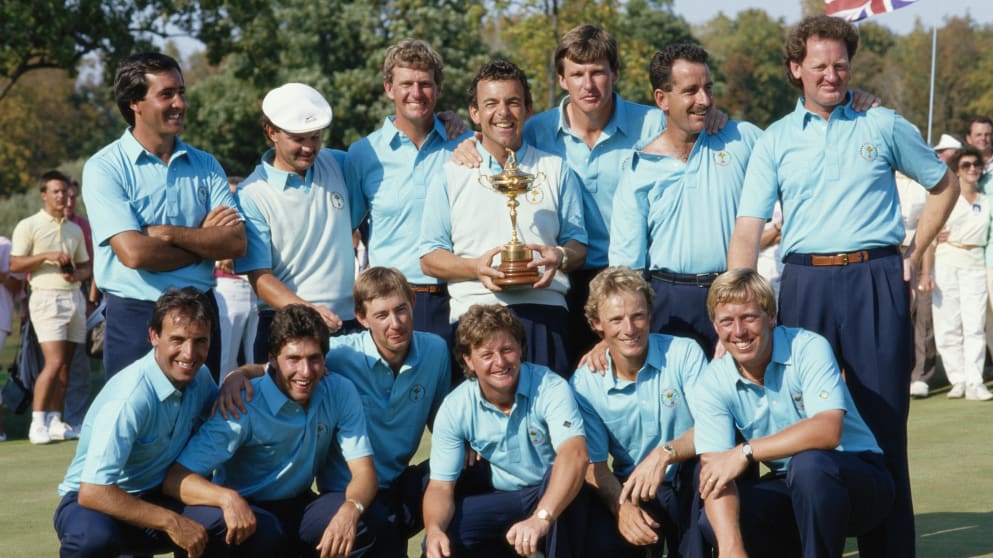
"His mental strength is that he's an uncomplicated guy," added Johnstone. "You've got simple beliefs and he doesn't live a complicated life, he goes through life as if there's nothing to it and he carried that through to his game.
"It was, 'what's the problem here? I know where I'm going to hit the ball, I know how to hit the ball so I'll hit it there and see if anybody can beat me'.
"I'm sure everybody feels the stress but he never looked like he did and that's just his nature, just a chilled, laidback man."
Come the Ryder Cup, Lyle and Langer reignited their partnership and took three points from three as a pair as Europe claimed that history-making 15-13 victory.
In the team room, Brown admits that Ballesteros was "the leader by miles" but that did not make Lyle any less influential.
"We had so many different characters in that team but all focused, all trying to do their absolute best with the big goal to win Majors and the Ryder Cup. It was a fantastic time and Sandy was a big, big part of it because we all knew if Sandy played his best, it didn't matter who you were, you weren't going to beat him.
"In the team room, he didn't have a presence like Seve but he had a presence of calm and authority in his game and he was never frightened to have a quiet word.
"He was one of our world-class players, respected by the Americans. There would have been times when the Americans respected us as people but they knew that most times we played they were going to come out on top because they were better players. That changed and Sandy was one of those players.
"He was also a player where the captain could say, 'do you fancy playing with whoever?' and he'd say yes, it wouldn't have mattered who it was. But he was a winner as well, he wasn't just fluffing around, he wanted to win like anything.
"He was a vital part of all the ingredients in that team room coming together. Seve was the leader by miles but he couldn't have done it all on his own and he knew it. Seve really respected Sandy and there wouldn't be a player who didn't."
The next winning team Sir Nick, Sandy and I all played. Twelve years later and only Sandy still had the same hair cut 💇…style.😂 #haircut @RyderCupEurope pic.twitter.com/KWMKWAyxPV
— Ken Brown.. ..⛳️ (@KenBrownGolf) March 31, 2023
Six months later came that monumental triumph at the Masters, with a wave of buoyed Europeans led by Lyle, Ballesteros, Langer, Ian Woosnam and reigning Open Champion Nick Faldo ready to conquer Augusta National.
Lyle entered the final round two shots ahead of Mark Calcavecchia but the duo were tied stood on the 18th tee.
It looked to be advantage Calcavecchia when Lyle found sand off the tee but the then 30-year-old produced one of the most famous shots in Masters history.
"That shot out of the bunker at Augusta on the last hole, that was perfect Sandy Lyle stuff," said Johnstone. "That is a seriously tough shot out of that bunker with a decent lip and he just walks in there, takes one look and hits it to 20 feet straight over the flag.
"The game shouldn't be that easy for anyone. That really exemplified Sandy Lyle's golf."
The following putt and victory jig changed British golf forever, with Faldo winning the next two Masters and Woosnam putting on the Green Jacket in 1991 as Europeans enjoyed seven wins in nine years.
"I don't think there's any doubt Sandy's win in 1988 set the stage for British players to have confidence at the Masters," said Brown. "And I don't know whether Sandy would have had the confidence if Seve hadn't won.
"Everyone was manifesting: 'I can play with Seve, I can beat Seve; I can play with Sandy, I can beat Sandy'. It drew the whole of that small group of players forward and also a small group which I was included in like Mark James, Sam Torrance, Howard Clark, Eamonn Darcy - there was another group that was striving to do the same things, it dragged everybody up. And in 85 and 87 we won the Ryder Cup, it was all part of that incredible story."
And what did Lyle do the day after writing his name in the history books and forever cementing his place in European golf folklore?
"He followed me to the next tournament which was Hilton Head and we shared a cabin there on the course," said Brown. "On the Monday after he won the Masters we went to the practice range and he must have given me a lesson for an hour.
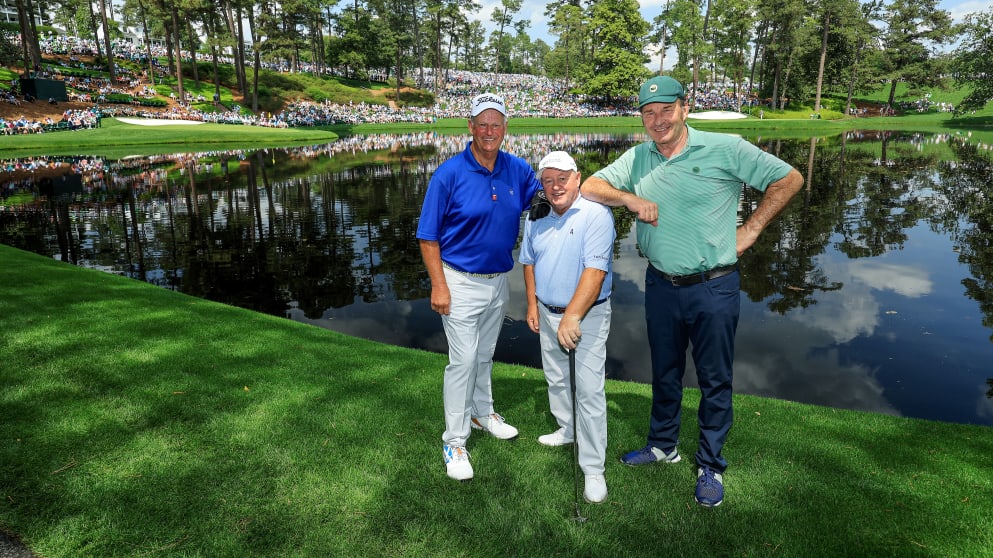
"He's just a genuinely good solid friend and you couldn't get a better, more decent man."
"He was just one of us," said Johnstone. "He was a Major winner and he was unbelievably good but he never gave you that impression, he was just one of the boys.
"When he was a young man coming out on Tour to post-winning a Major, you'd see him the next week and there was absolutely not one iota of difference. Whether he won the monthly medal or a Major he remained exactly the same man and that is a rarity in this world. It says everything you need to know about Sandy - just a wonderful man.
"He was a joy to play with. He was cheerful, he was happy, he never got in your way or tried to put you off, he was a gentleman and a sportsman and that's the greatest compliment you can give a man."
"He is always good company," added Brown. "He is quiet, never going to be bombastic or anything like that but he is good company and charming, always affable.
"He was generous with his time if anyone was struggling with anything and he's kind, you can't ask for much more than that."
